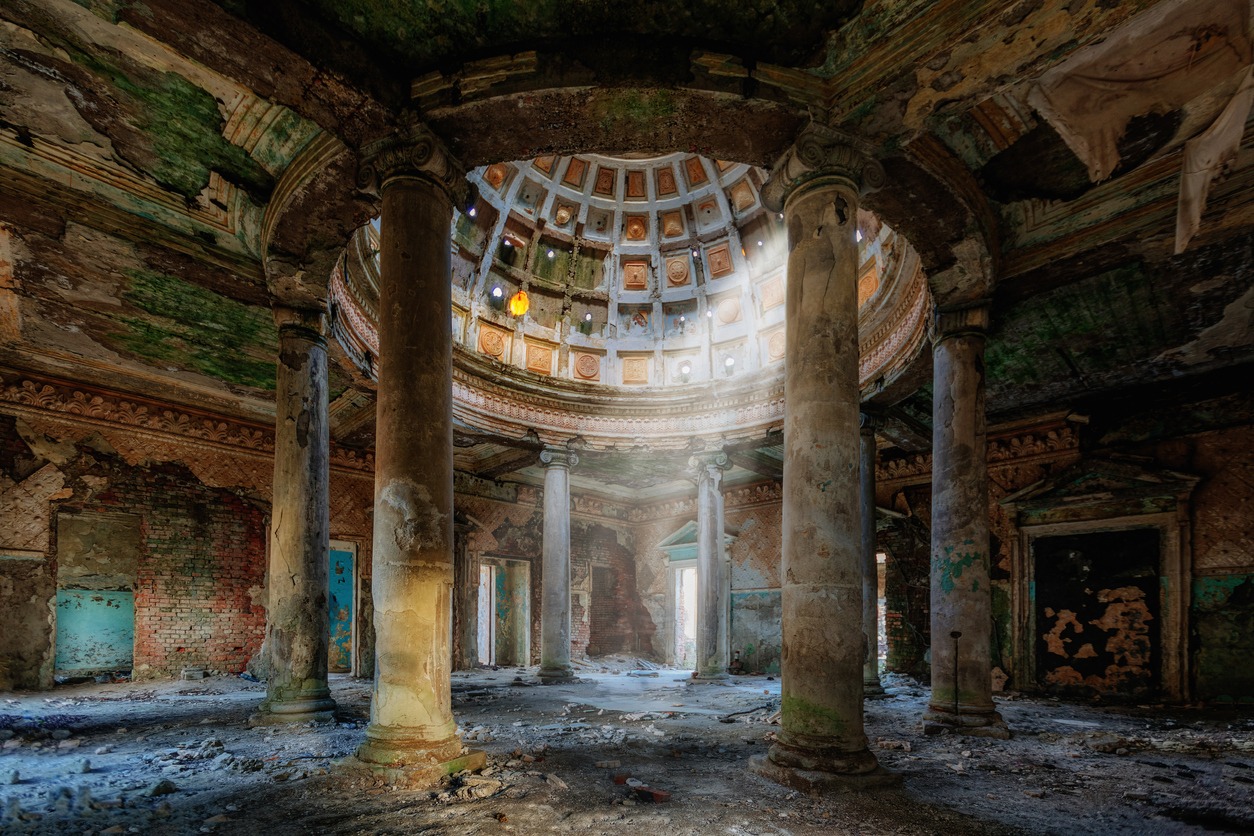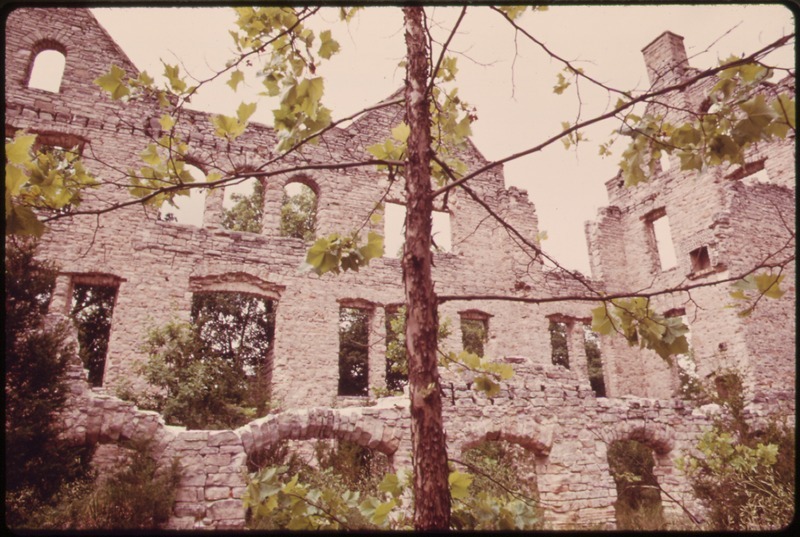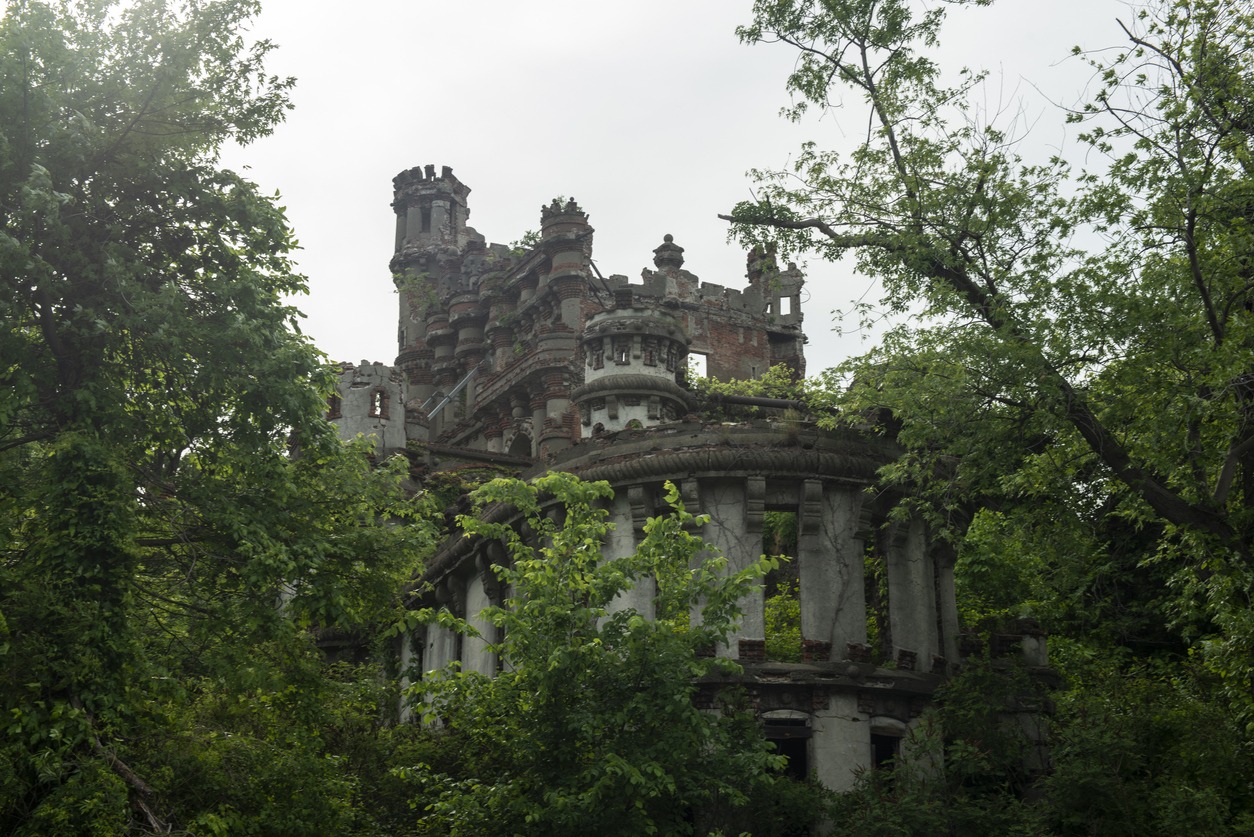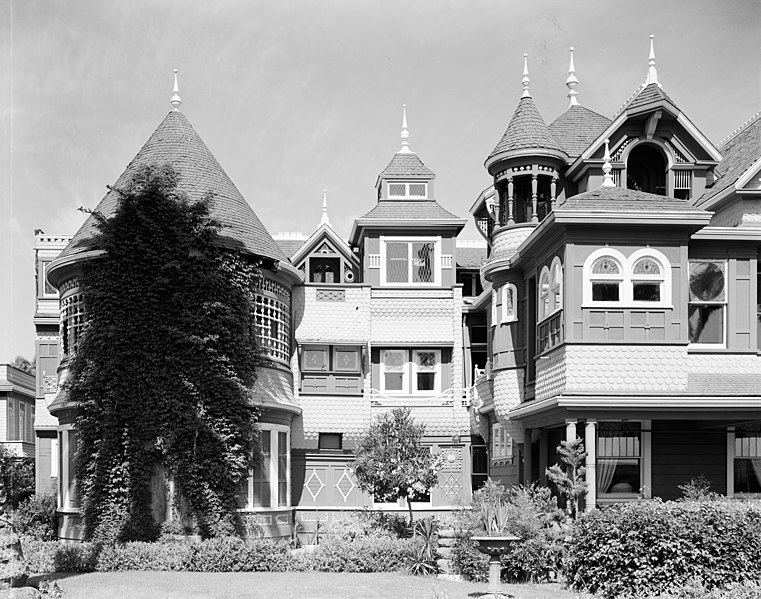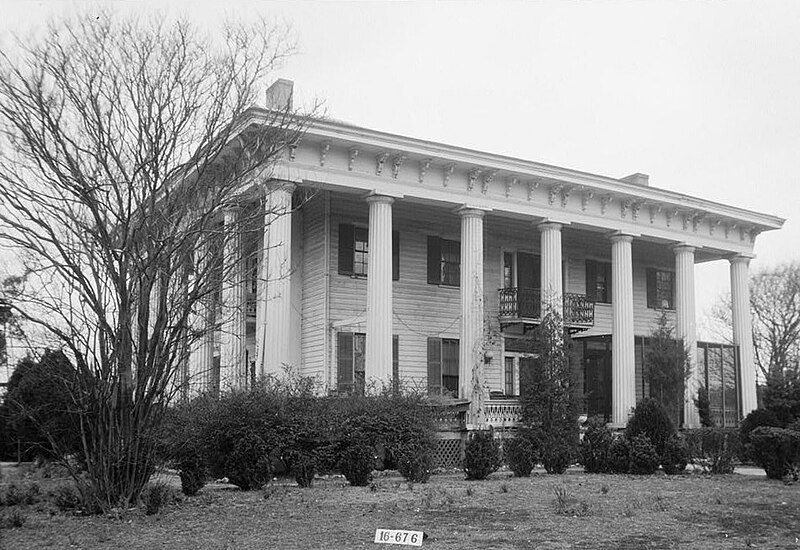In the hidden corners and expansive sceneries of the United States lie the fragments of a long-gone era, manifesting as grand, abandoned mansions and estates. These majestic structures, once symbols of wealth and opulence, now stand in plain contrast to their former glory, offering a glimpse into a past world of elegance and extravagance.
In this article, we will explore these forgotten relics of American history. From the sprawling estates of the East Coast to the historic mansions of the deep South, each abandoned property tells a unique story of its inhabitants, architectural trends, and the shifting tides of fortune and time. As we delve into the history of these magnificent yet now desolate structures, we uncover tales of economic booms, family legacies, and eventual decline.
The Ha Ha Tonka Mansion, Missouri
The Ha Ha Tonka Mansion in Missouri, also known as the Ha Ha Tonka Castle, is a striking example of early 20th-century architecture and ambition, now standing as a solemn relic within the Ha Ha Tonka State Park. This stone mansion, inspired by European castles, was the brainchild of wealthy Kansas City businessman Robert McClure Snyder Sr., who started its construction in 1905.
Tragically, Snyder died in an automobile accident in 1906, and the mansion was eventually completed by his sons in the 1920s. The structure was built atop a towering bluff, providing a panoramic view of the Lake of the Ozarks and the surrounding wilderness. However, the mansion’s glory was short-lived; it was gutted by a fire in 1942, which left behind only its stark stone walls.
Today, these ruins offer a haunting and picturesque glimpse into Missouri’s history, attracting visitors with its unique blend of natural beauty and architectural wonder.
Bannerman Castle, New York
Bannerman Castle, nestled on the rugged and picturesque Pollepel Island in the Hudson River, New York, is a fascinating emblem of early 20th-century American history. It was built by Scottish immigrant Francis Bannerman VI, who ran a successful military surplus business. The castle was initially conceived as a warehouse for his extensive inventory of military equipment.
Construction began in 1901, and the castle was designed in the Scottish Baronial style, reflecting Bannerman’s heritage and romantic vision. However, following Bannerman’s death in 1918 and a devastating explosion of the stored ammunition in 1920, the castle and its structures fell into disuse and disrepair. Over the years, the elements and time took their toll, leaving the castle in a state of picturesque ruin.
Despite its dilapidation, Bannerman Castle remains a striking landmark, visible to those traveling along the Hudson. Today, it is managed by the Bannerman Castle Trust and can be visited on guided tours, offering a unique glimpse into a personal dream materialized as a grandiose structure, now a haunting remnant of the past.
The Mike Tyson Mansion, Ohio
The abandoned mansion of former heavyweight boxing champion Mike Tyson in Southington, Ohio, is a fascinating testament to the fleeting nature of fame and fortune. Built in the late 1980s during the pinnacle of Tyson’s career, the lavish 25,000-square-foot mansion epitomized the opulence associated with celebrity lifestyle.
The estate featured extravagant amenities, including a swimming pool, a Jacuzzi, tiger cages (Tyson famously kept pet tigers), and a basketball court, reflecting Tyson’s extravagant lifestyle at the time. However, following Tyson’s financial struggles and legal issues, the mansion was abandoned in the late 1990s, turning it into a symbol of lost luxury and the volatility of a sports star’s life.
For years, the property sat in a state of eerie disrepair, with its once-grand features falling into decay. In recent years, it was acquired with plans for transformation into a church, aiming to breathe new life into the grandiose structure.
Carleton Villa, Carleton Island, New York
Carleton Villa on Carleton Island, New York, is a remarkable architectural treasure, now standing as an enigmatic relic of a different age. Built in 1894 for William O. Wyckoff, who made his fortune with the Remington Arms Company and typewriter business, the villa was a manifestation of Gilded Age luxury and opulence.
It was designed by the well-known architect William Miller in a Romanesque Revival style. It was intended as a grand summer home, featuring an impressive façade with expansive windows and intricate stonework. However, the villa’s history is marked by tragedy and decline. Wyckoff only spent one night in the mansion before passing away, and the property subsequently fell into disuse. Over the decades, it suffered from neglect, leading to its current state of graceful decay.
The villa, now overtaken by nature, stands isolated on the island. Its once-elegant structure is a poignant reminder of the impermanence of wealth and the relentless march of time.
Pineheath House, New York
Pineheath House, located in the Hudson Valley of New York, is an enigmatic and nearly forgotten relic of early 20th-century affluence. This 40-room mansion, hidden away amidst overgrown vegetation, was once the lavish summer home of Sir Dhunjibhoy and Lady Bomanji, prominent figures in British and Indian high society.
Built in the early 20th century, this lavish home was renowned for its opulent parties and as a hub of high society. Following the couple’s deaths in the 1980s, the mansion was left virtually untouched for decades, with their belongings and artifacts of their affluent lifestyle remaining as if frozen in time.
The passage of years saw Pineheath House fall into a state of graceful decay, with its once-grand interiors now telling a story of neglect and the passage of time. The estate, shrouded in an aura of mystery, captivates urban explorers and historians with its unique blend of cultural heritage and eerie, frozen-in-time atmosphere, offering a rare glimpse into the secluded lives of a bygone elite.
Lynnewood Hall, Pennsylvania
Lynnewood Hall, a magnificent Gilded Age mansion in Elkins Park near Philadelphia, Pennsylvania, is a monument to America’s era of industrial tycoons and unparalleled opulence. Built between 1897 and 1900 for Peter A. B. Widener, an immensely wealthy streetcar magnate and art collector, this 110-room Neoclassical Revival mansion was designed by renowned architect Horace Trumbauer.
The sprawling estate, once set on over 300 acres of meticulously landscaped grounds, exemplified the extravagant lifestyle of America’s elite during the turn of the century. Lynnewood Hall featured an impressive art gallery that housed Widener’s extensive collection of European art, a private chapel, and a ballroom, making it a hub of high society social events.
However, following the family’s financial decline and the Great Depression, the mansion fell into disrepair. Today, it stands as an abandoned shell of its former glory. Despite its dilapidated state, Lynnewood Hall remains one of the largest surviving Gilded Age mansions, a silent witness to the opulence and tragedy of an era marked by extreme wealth and social change.
Winchester Mystery House, California
This mansion in San Jose, California, stands not as an abandoned relic but as a legendary and enigmatic mansion with a history shrouded in mystery and intrigue. Built by Sarah Winchester, the widow of firearm magnate William Wirt Winchester, the house is renowned for its architectural oddities and lack of any master building plan.
Construction on the house started in 1884 and continued non-stop for 38 years until Sarah Winchester’s death in 1922, spurred by her belief that constant building would appease the spirits of those killed by Winchester rifles. The sprawling mansion features over 160 rooms, including 40 bedrooms, numerous staircases leading nowhere, doors that open into walls, and windows looking into other rooms.
Today, far from abandoned, the Winchester Mystery House is a popular tourist attraction, drawing visitors intrigued by its architectural curiosities and the lore of its creation. It serves as a monument to the eccentricities of its owner and the era’s spiritualist movement, captivating those who visit with its labyrinthine hallways and the mystery of its origins.
Dicksonia Plantation, Alabama
Dicksonia Plantation, once a stately antebellum estate located in Lowndesboro, Alabama, is a haunting emblem of the South’s historical and architectural legacy. Built in 1830 by David White as a cotton plantation, Dicksonia epitomized the grandeur and societal complexities of the pre-Civil War era in the Southern United States.
The mansion, designed in the Greek Revival style, was characterized by its imposing Doric columns, expansive front porch, and elegant symmetry, typical of the period’s architectural trends. Over the years, Dicksonia witnessed the tumultuous history of the region, including the Civil War and the subsequent societal shifts.
After changing hands through various owners, the plantation eventually fell into disuse and was abandoned. The once-grand mansion succumbed to fire in the 1960s, leaving behind only its iconic columns and a few structures as silent witnesses to its past glory and the storied history of the Deep South. Today, the site of Dicksonia Plantation, with its ghostly remnants, evokes a bygone era marked by both beauty and tragedy, captivating historians and visitors alike with its rich, albeit somber, heritage.
Conclusion
From the once-lavish plantation homes in the South to the opulent Gilded Age mansions of the Northeast, these structures stand as silent witnesses to the shifting tides of history, economy, and culture. Today, they capture the imagination with their decaying beauty and evoke a sense of nostalgia and intrigue.
Exploring these remnants offers a unique window into the past, revealing the complexities and narratives woven into the fabric of American history. As they stand, weathered by time and nature, these abandoned estates continue to fascinate, reminding us of the impermanence of even the grandest human endeavors.

